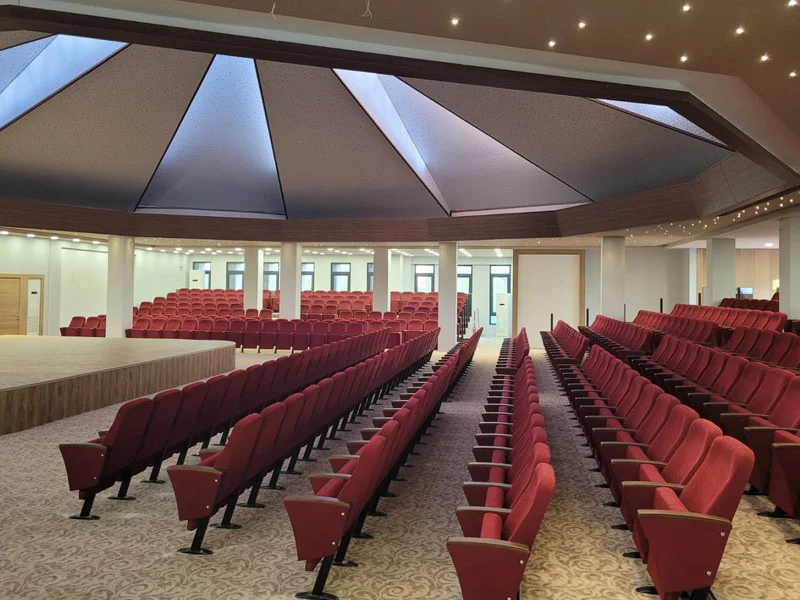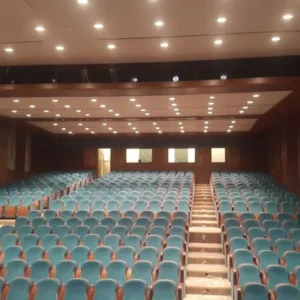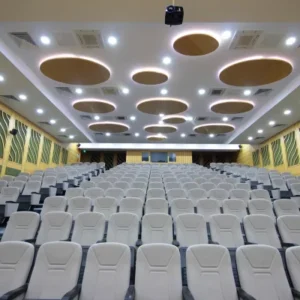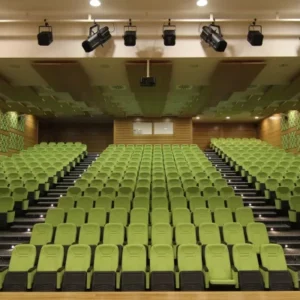Walking into a well-organized auditorium is like witnessing a silent symphony of order. Ever wondered what makes that smooth experience possible? Behind every successful event, performance, or keynote lies one critical detail: the auditorium seating chart. It’s not just rows and numbers—it’s a strategic plan that guides user flow, maximizes capacity, and supports visual and acoustic clarity for every single seat. Let’s unpack what this means, especially for those working in architectural design, procurement, and venue management.
Table of Contents
Why a Proper Auditorium Seating Chart Changes Everything
A meticulously designed auditorium seating chart can dramatically influence not only audience experience but also operational efficiency. We’re talking about traffic circulation, evacuation routes, sightline optimization, and even ADA compliance. Without a carefully mapped chart, everything from booking logistics to safety inspections can turn into a nightmare.
So, how do seating charts impact venue profitability? By balancing comfort with capacity, a smart chart allows for better ticket zoning, premium seating areas, and reduced seat wastage. Simply put, it’s where architectural intent meets commercial strategy.
Theatre Seating Chart: A Tool for Acoustic and Visual Harmony
In a theatre seating chart, more than aesthetics are at play. Designers must consider viewing angles, sound travel, rake angles, and more.
Considerations for Tiered Seating
Tiered or raked seating isn’t just about giving the back row a better view. It ensures that sound travels uniformly, minimizing echoes and dead zones. Rake angles typically range from 8° to 15°, depending on ceiling height and room depth.
Sightline Studies in Theatre Layout
Sightline diagrams ensure that no seat has a blocked view. These are calculated based on eye-level to stage plane ratios—often around 120 cm (47 in) seated eye height. A well-balanced seating chart integrates these calculations from day one.
Venue Seating Plan: Adaptability Meets Functionality
Designing a venue seating plan means planning for both flexibility and structure. This is where retractable seating systems, modular rows, and multi-use zoning become essential.
Why Multi-Purpose Venues Demand Agile Seating Plans
Think sports events today, concerts tomorrow, and lectures next week. With the right auditorium design layout, venues can reconfigure within hours using automated or semi-automated seat tracking systems. Professionals are increasingly using seating chart software for drag-and-drop scalability and real-time visualization.
Are digital tools replacing traditional layouts?
Not entirely, but they’re becoming essential. Platforms that offer auditorium seating templates and venue seating design simulations are streamlining pre-installation approvals and stakeholder presentations.
Auditorium Seat Layout: Optimizing Capacity Without Compromise
Striking the balance between seat count and comfort used to be a tug-of-war. Now, with advanced auditorium seat layout modeling, you can maximize headcounts without sacrificing walkways or safety zones.

Smart Aisle Spacing and Emergency Planning
Aisle widths are usually calculated based on occupancy—minimum 110 cm (43 in) for public assemblies. Incorporating curved or fan-shaped layouts can often add rows while preserving egress efficiency.
How does capacity planning shape layout decisions?
Capacity isn’t just about number of seats—it’s about flow rate, safety compliance, and functional access. That’s why auditorium capacity planning often starts at the conceptual sketch stage.
Concert Hall Seating Chart: Precision That Amplifies Experience
When acoustics are king, every seat in a concert hall seating chart has to support sonic clarity. This goes beyond padding and upholstery—it dives deep into materials, spacing, and reflection points.
Design Geometry and Material Science
Bowed rows, convex rear walls, and staggered seat backs all contribute to better sound diffusion. Seat design—specifically, the sound absorption coefficient of the upholstery—affects how audio carries when a seat is empty versus occupied.
What’s the ideal seat density in concert halls?
Most modern concert halls aim for 0.5–0.7 m² (5.4–7.5 ft²) per seat footprint. This includes seat width, legroom, and armrest space, and is highly influenced by the type of performances hosted.
Event Seating Arrangement: Seamless Flow for Operational Success
Events, unlike permanent venues, demand flexible, sometimes temporary, event seating arrangement strategies. Whether it’s an international summit or a product launch, layout decisions must anticipate everything from stage height to VIP zoning.
Dynamic Zoning and Seat Allocation
Zoning isn’t just a luxury—it’s a necessity. With event seating management platforms, operators can predefine entry points, seat clusters, and exit sequences tailored to the event’s nature and audience profile.
Curious how pros avoid last-minute chaos?
By integrating concert seating planner tools with real-time ticketing platforms. This enables instant updates to layout changes and reserved zones.
How Professionals Use an Auditorium Seating Diagram in Real Projects
Blueprints are great, but a real auditorium seating diagram adds clarity to every stakeholder. From contractors to fire marshals, everyone reads the same map.
Visualizing Infrastructure Integration
Things like under-seat HVAC outlets, floor bolting systems, and accessible seating integration become easier to plan when presented via layered diagrams.
What makes a seating diagram truly effective? High resolution, layered visuals showing sightlines, zoning colors, capacity numbers, and material tags. It becomes the visual language of coordination among multiple teams.
The Future of Auditorium Seating Templates: Automation and Customization
Templates are evolving beyond static files. Now, they’re interactive, intelligent, and integrated.
What does AI bring to auditorium design?
AI-powered seating chart software can now suggest layouts based on crowd behavior data, simulate evacuation models, and optimize accessibility routes without human intervention.
Professionals using these next-gen tools can cut planning time in half and make data-backed decisions more confidently.
Final Thoughts: Why Every Professional Should Revisit Their Auditorium Seating Chart
From performance venues to corporate auditoriums, the auditorium seating chart plays a silent but powerful role in operational excellence. And as the industry pivots to smarter, more adaptive environments, having a deeply informed and technically sound seating plan is no longer a luxury—it’s a strategic advantage.
Whether you’re a procurement lead or an architectural consultant, revisiting your approach to seating charts could reveal opportunities to improve flow, enhance experience, and meet future demands more effectively.










